Show EOL distros:
Package Summary
This package contains a 6-DoF object localizer for textured household objects
- Maintainer: Meißner Pascal <asr-ros AT lists.kit DOT edu>
- Author: Allgeyer Tobias, Hutmacher Robin, Meißner Pascal
- License: GPL
- Source: git https://github.com/asr-ros/asr_descriptor_surface_based_recognition.git (branch: master)
Package Summary
This package contains a 6-DoF object localizer for textured household objects
- Maintainer: Meißner Pascal <asr-ros AT lists.kit DOT edu>
- Author: Allgeyer Tobias, Hutmacher Robin, Meißner Pascal
- License: GPL
- Source: git https://github.com/asr-ros/asr_descriptor_surface_based_recognition.git (branch: master)
Package Summary
This package contains a 6-DoF object localizer for textured household objects
- Maintainer: Meißner Pascal <asr-ros AT lists.kit DOT edu>
- Author: Allgeyer Tobias, Hutmacher Robin, Meißner Pascal
- License: GPL
- Source: git https://github.com/asr-ros/asr_descriptor_surface_based_recognition.git (branch: master)
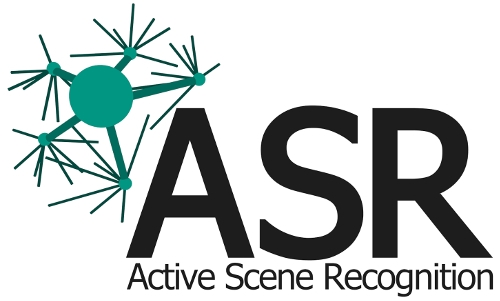
Contents
Description
This package contains an object localization system that returns 6-DoF poses for textured objects in RGBD-data. 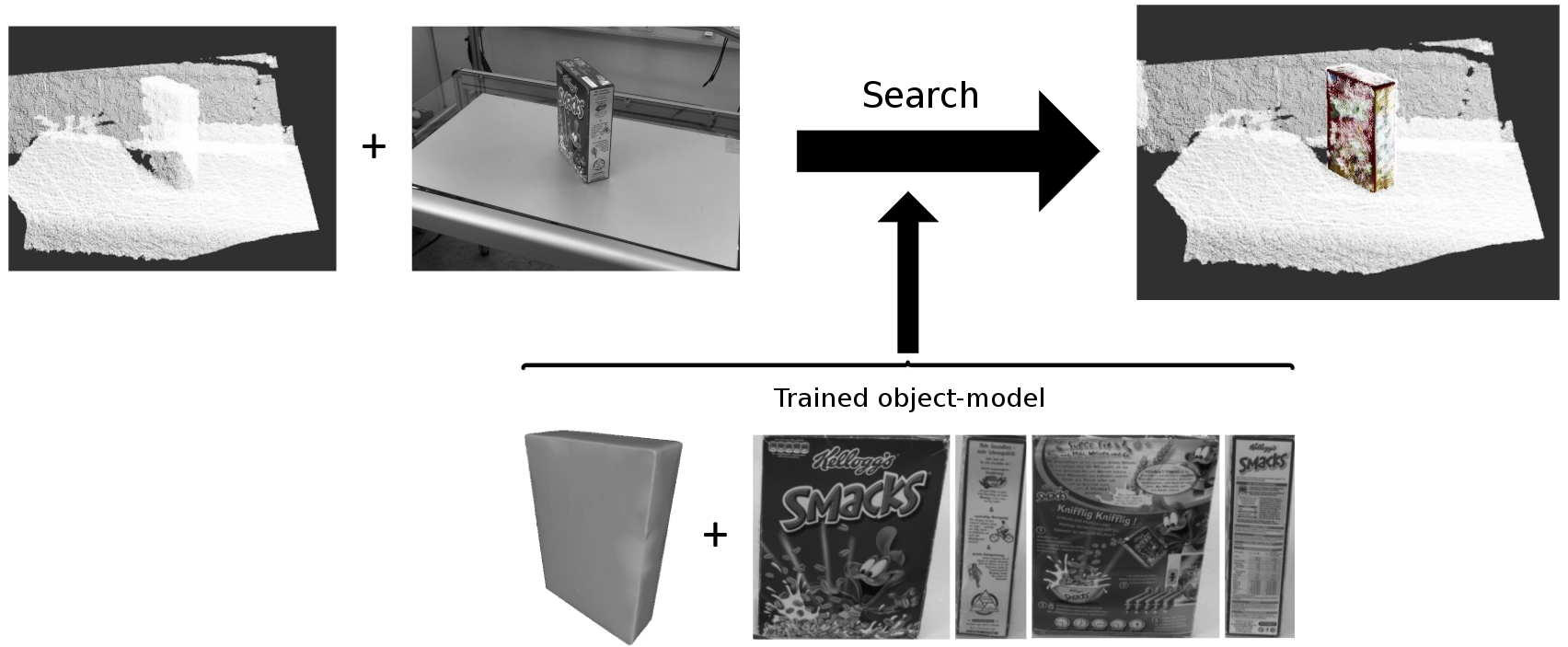
Functionality
This package uses a combination of 2D and 3D recognition algorithms to detect objects in a textured point cloud. This task is achieved by using a 5-step process:
At first a 2D-recognition on the input-image is done. This recognition is based on the descriptor-matching functions the HALCON library offers (see here and here for more information on the used matching algorithms and the used parameters) and it uses images of the object, taken from different orientations (we call them views), as references for the matching with the scene image (therefore a coarse orientation of the object can already be computed.
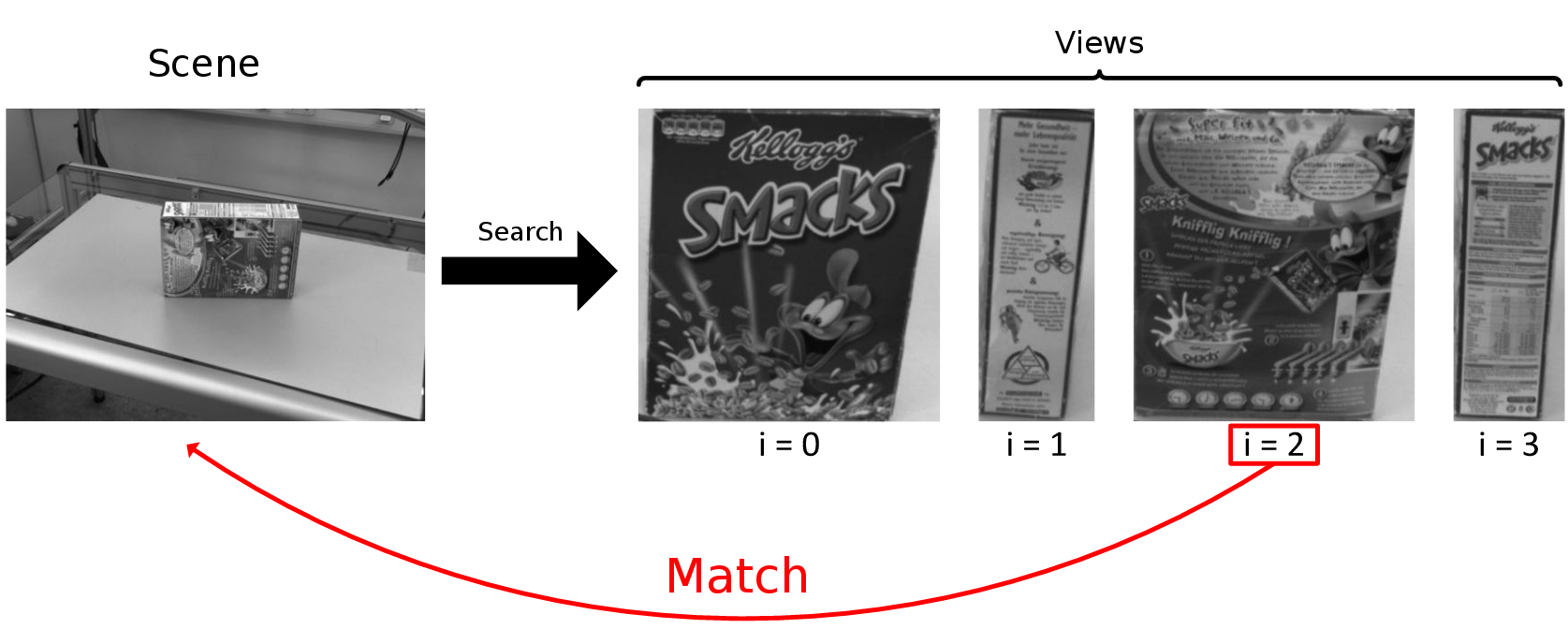
Once a texture (view) of the searched object is found in the image, the point cloud is reduced with the diameter of the object at the corresponding location (this correspondence exists because of the registration of the camera image to the depth image). In the training phase the object's diameter was set and so was the location of the found view's center. As the matching returns a homography as a result which describes the transformation of the trained view into the scene image, it is possible to transform the set center point with this homography into the image. For the pixel which results from this transformation, the corresponding 3D-point in the cloud can be obtained. To reduce errors which can occur because of noise in the point cloud data, the median of multiple points in the area of this corresponding pixel is used. To get those other points, an offset is added to the pixel location and the corresponding 3D-points are taken into account for the calculation of the median. Now the point cloud is reduced with the diameter of the object around this median point.
Transformation into the scene image (abstracted; view's center depicted as cross; descriptor points depicted as red dots):

Cloud reduction:

The reduced point cloud, which should only contain the object, now is used for a 3D matching with the trained object model (see here and here for more information).
In case of a rotation-variant object, the resulting pose from the last step can now be returned; as we want to be able to recognize objects without this feature as well though (e.g. cylindrical objects or spherical ones), more steps are necessary to ensure that the found pose is correct. That is because the last step only uses the geometrical attributes of the object to find it in the point cloud but not the texture/color information. To ensure that the found pose is also valid for those informations, the 2D and 3D matching results are compared and the pose is adjusted (as we know which view was found and how it is transformed into the image we can approximate the orientation of the object).
Rotation-invariance (from left: no rotation, cylindrical, spherical):
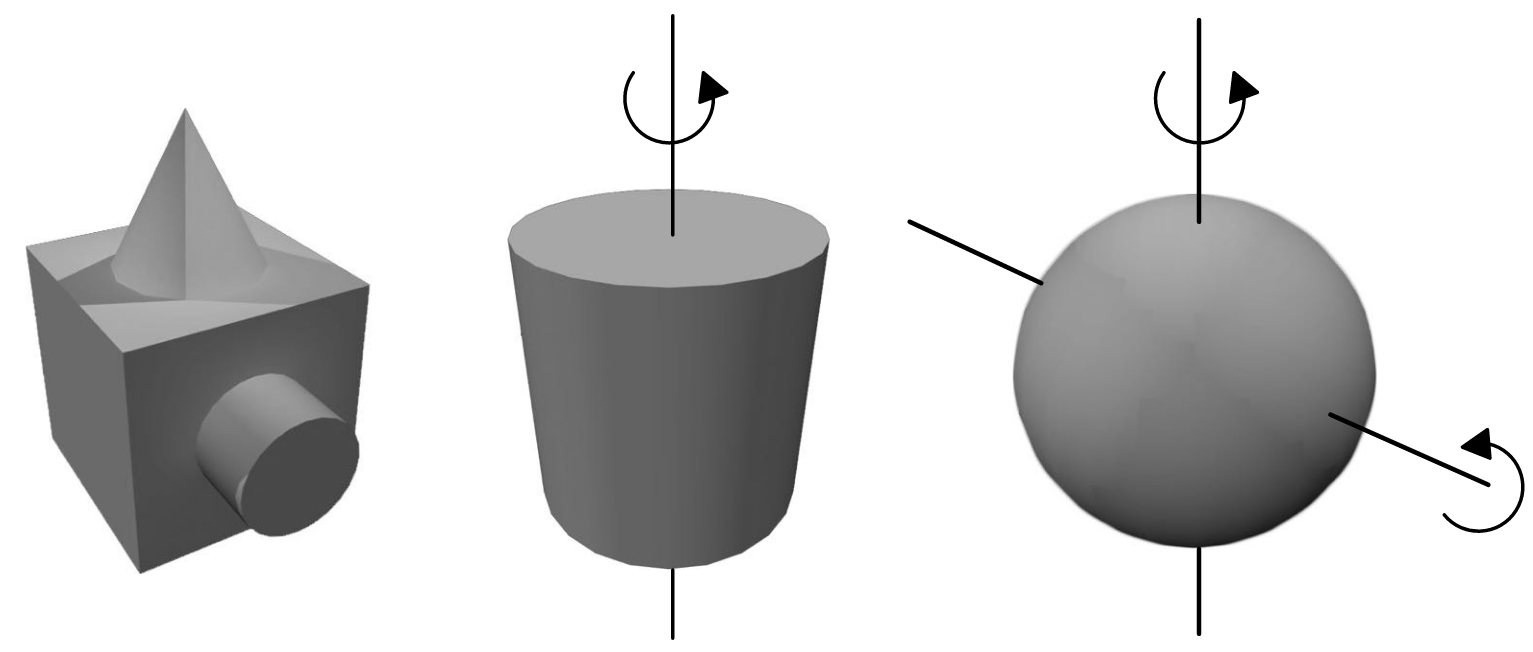
Geometrical view problem (both views on the left appear as the cloud on the right):
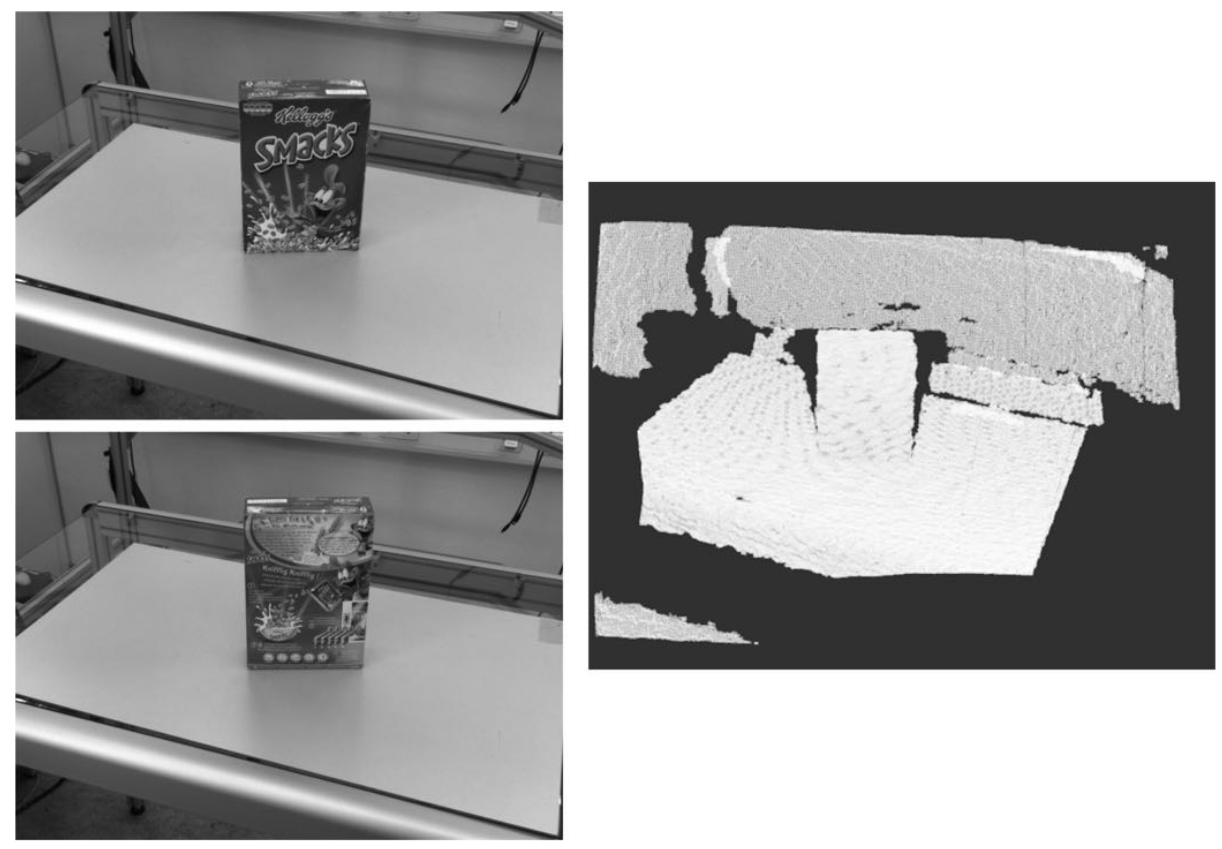
The last step is optional and is used to add another validation layer to the recognition process. The textured mesh of the found object is rendered to an artificial image with the found pose. Now the 2D matching from step 2 is done again on this new image. Based on a metric comparing the resulting homographies of the matching on both the real and the artificial image, it can be checked whether the found pose is valid and can be returned.
Real scene image left, artificial one right:
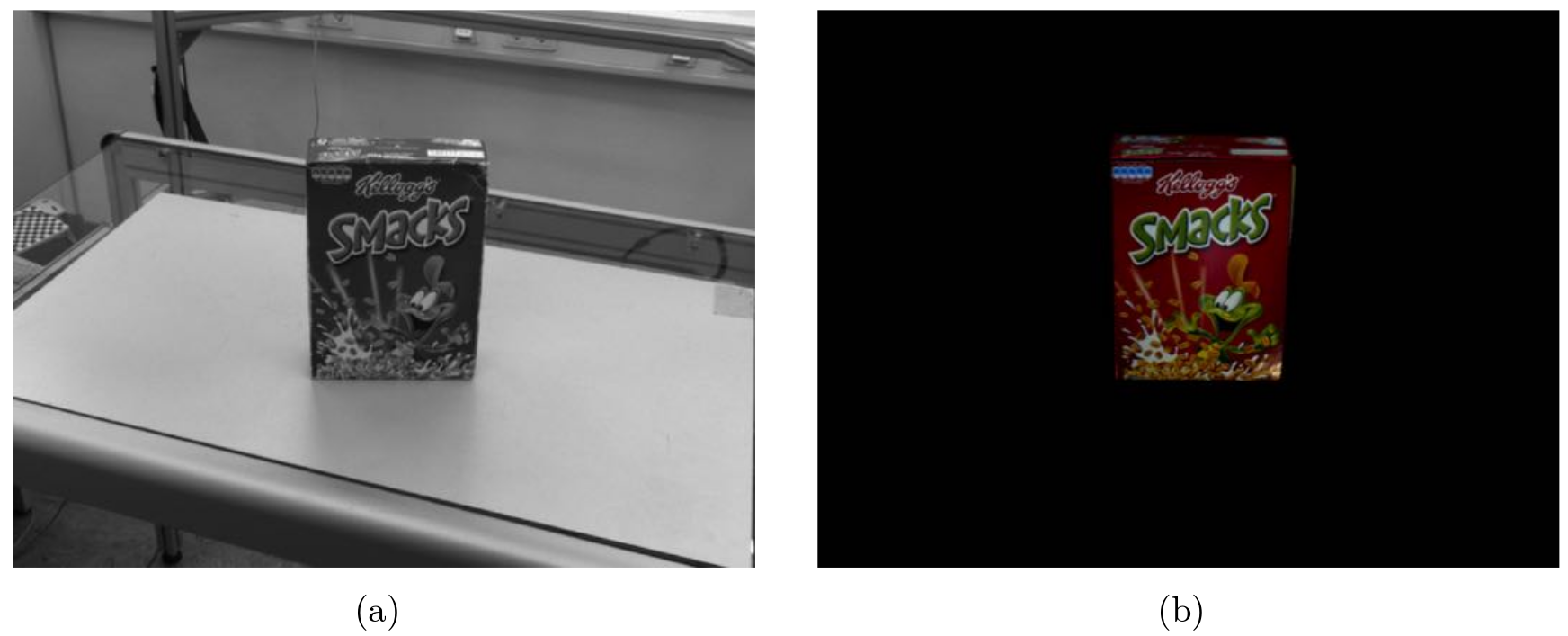
In addition to the object recognizer, the package offers a graphical training application which is used to add new objects to the list of recognizable entities.
Usage
Needed packages
Needed software
- wxWidgets
- Eigen
- Boost
Needed hardware
A depth sensor with a registered RGB camera is needed to get textured point clouds as an input for this package. In our scenario we used a Microsoft Kinect and an additional AVT Guppy camera for the RGB images because of the low resolution of the internal RGB-camera of the Kinect.
As this package makes use of the HALCON library provided by the asr_halcon_bridge package, you need to make sure that a valid license is available on your machine. If this license is obtained by using a USB-dongle, make sure that it is plugged in when you use this software or you will get an exception at startup.
Start system
To start the process, call:
roslaunch asr_descriptor_surface_based_recognition descriptor_surface_based_recognition.launch
Now you can call one of the provided services to add or remove objects to/from the list of recognizable ones.
ROS Nodes
Subscribed Topics
sensor_msgs/Image: The RGB-camera image (default: /stereo/left/image_rect_color)
sensor_msgs/Image: The same as the camera image above but as a greyscale image (default: /stereo/left/image_rect)
sensor_msgs/PointCloud2: The point cloud the images above are registered to (default: /kinect/depth_registered_with_guppy/points)
Published Topics
visualization_msgs/MarkerArray: A visualization of the volume in the point cloud the recognizer uses for each object after it was found in 2D (default: /asr_descriptor_surface_based_recognition/object_boxes)

sensor_msgs/PointCloud2: A visualization of the reduced point clouds the recognizer uses for the 3D recognition (one color for each object) (default: /asr_descriptor_surface_based_recognition/object_clouds)
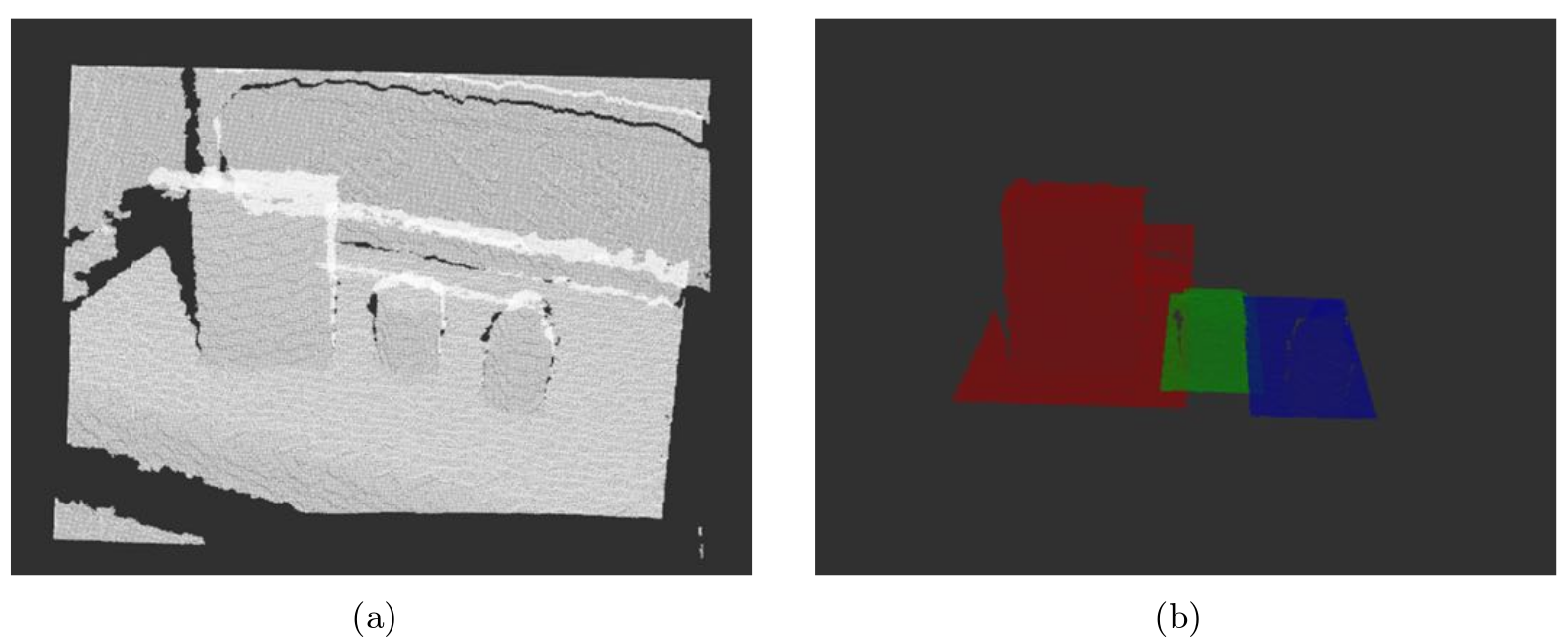
sensor_msgs/Image: A visualization of the 2D recognition results
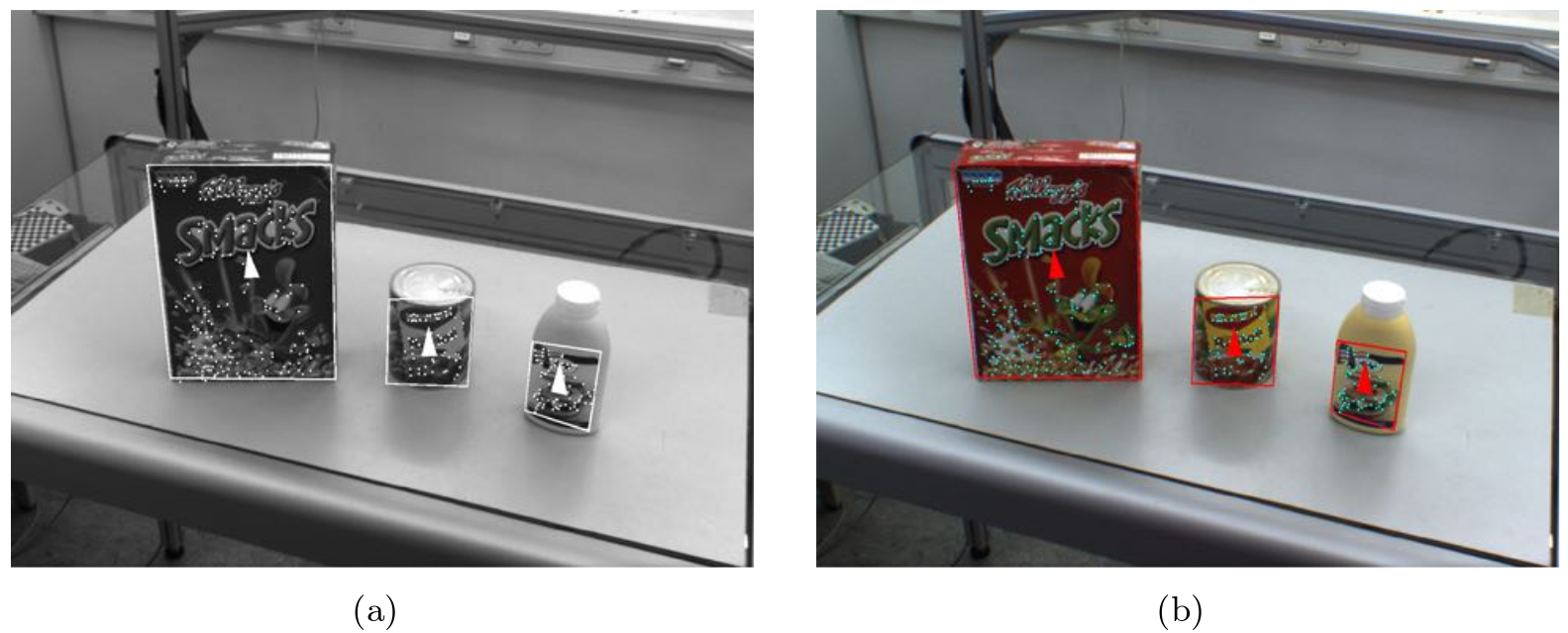
asr_msgs/AsrObject: The found objects as an AsrObject-message which can be used by other packages and contains information like the name, pose etc. (default: /stereo/objects)
visualization_msgs/Marker: A visualization of the found objects as meshes (default: /stereo/visualization_marker)
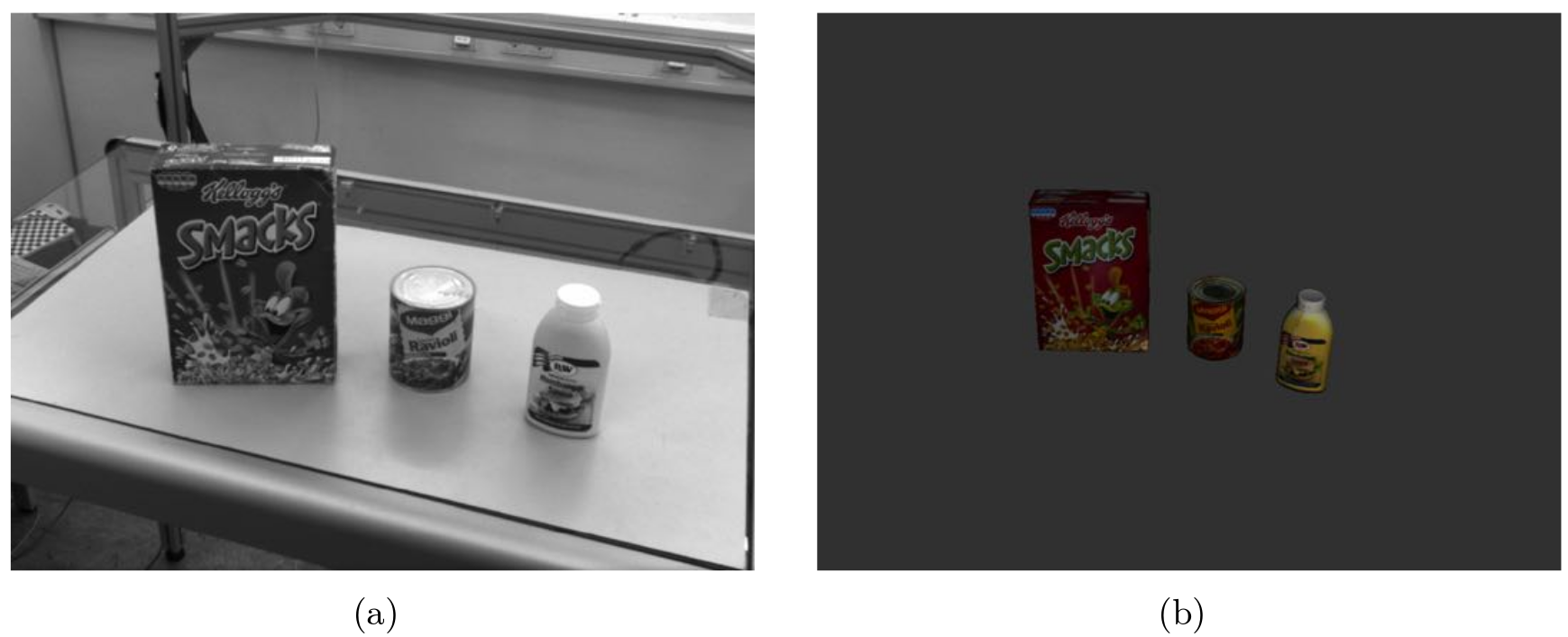
Parameters
There are two types of parameters which can be set, static and dynamic ones. The static ones can be found in the .yaml file in the param-directory and the dynamic ones in the launch-file (or during runtime by using dynamic_reconfigure).
Static parameters:
- image_color_topic (string): The name of the topic the colored scene-image is published on (default: /stereo/left/image_rect_color)
- image_mono_topic (string): The name of the topic the greyscale scene-image is published on (default: /stereo/left/image_rect)
- point_cloud_topic (string): The name of the topic the point cloud is published on (default: /kinect/depth_registered_with_guppy/points)
output_objects_topic (string): The name of the topic the found objects are published on as AsrObject -messages (default: /stereo/objects)
- output_marker_topic (string): The name of the topic the found objects are published on as visualizable meshes (default: /stereo/visualization_marker)
- output_marker_bounding_box_topic (string): The name of the topic the bounding boxes of the reduced point clouds are published on for visualization (default: object_boxes)
- output_cloud_topic (string): The name of the topic the reduced point clouds are published on for visualization (default: object_clouds)
- output_image_topic (string): The name of the topic the 2D recognition results are published on for visualization (default: objects_2D)
- pose_val_image_width (double): The width of the pose validation image (should be the same as the width of the original camera image) (default: 1292.0)
- pose_val_image_height (double): The height of the pose validation image (should be the same as the height of the original camera image) (default: 964.0)
- pose_val_render_image_width (integer): The width of the render image used for visualizing the pose validation (default: 800)
- pose_val_render_image_height (integer): The height of the render image used for visualizing the pose validation (default: 600)
- pose_val_far_plane (double): The far clip plane distance of the virtual camera used for pose validation (default: 100)
- pose_val_near_plane (double): The near clip plane distance of the virtual camera used for pose validation (default: 0.01)
- pose_val_cx (double): The x-value of the optical center of the virtual camera used for pose validation (should be the same as the one of the original camera) (default: 648.95153)
- pose_val_cy (double): The y-value of the optical center of the virtual camera used for pose validation (should be the same as the one of the original camera) (default: 468.29311)
- pose_val_fx (double): The focal length in x-direction of the virtual camera used for pose validation (should be the same as the one of the original camera) (default: 1689.204742)
- pose_val_fy (double): The focal length in y-direction of the virtual camera used for pose validation (should be the same as the one of the original camera) (default: 1689.204742)
Dynamic parameters:
- medianPointsOffset (integer): Offset of the points used for calculating the median point the point cloud reduction relies on (see step 2 in functionality).
samplingDistance (double): Scene sampling distance relative to the diameter of the surface model used in the 3D recognition (the HALCON matching algorithms reduces the scene point cloud by sampling it with this distance, see here)
- keypointFraction (double): Fraction of sampled scene points used as key points in 3D recognition (see the page mentioned at the samplingDistance parameter)
- useVisualisationColor (boolean): Use a colorized image for the visualisation of the 2D recognition
- visualisationColorPointsRed (integer): Red component of the visualized points' color
- visualisationColorPointsGreen (integer): Green component of the visualized points' color
- visualisationColorPointsBlue (integer): Blue component of the visualized points' color
- visualisationColorBoxRed (integer): Red component of the visualized bounding box color
- visualisationColorBoxGreen (integer): Green component of the visualized bounding box color
- visualisationColorBoxBlue (integer): Blue component of the visualized bounding box color
- boundingBoxBorderSize (integer): Thickness of the visualized bounding box in the 2D visualization
- orientationTriangleSize (integer): Size of the triangle visualizing the orientation of the bounding box in the 2D visualization
- featurePointsRadius (integer): Radius of the visualized feature points in the 2D visualization
- drawCloudBoxes (boolean): Draw bounding boxes, each containing the 3D search domain for a found object instance
- drawCompleteCloudBoxes (boolean): Draw a complete bounding box (only the front side if false)
- usePoseValidation (boolean): Validate found poses by comparing the input RGB-image to a rendered one with the found objects
- poseValidationDistanceError (integer): Maximum distance between two points which were projected with the found projection matrix in the original image and the one in the rendered image
- aggressivePoseValidation (boolean): Discard a pose if the searched view can't be found in the rendered image during pose validation (e.g. because of the bad resolution of the rendered mesh model). If disabled, a pose is always set as valid when no view was found, otherwise it is set as invalid in that case
- evaluation (boolean): Output evaluation files (runtimes and found poses)
Needed Services
The process calls services from the asr_object_database to get information about the objects which are recognizable:
/asr_object_database/object_meta_data: Is called to get basic information about recognizable objects
/asr_object_database/recognizer_list_meshes: Is called to get all available object meshes. This information is needed due to internal implementation details of the pose validation step.
Provided Services
- get_recognizer: Adds an object to the list of recognizable ones
- Parameters:
- object_name (string): The name of the object
- count (integer): The maximum amount of instances this object can have in the scene
- use_pose_val (boolean): If true, pose validation is used to reduce the amount of recognition failures
- Returns:
- success (boolean): Indicates whether the object was added correctly
- object_name (string): The name of the added object
- Parameters:
- release_recognizer: Removes a single object from the list of recognizable ones
- Parameters:
- object_name (string): The name of the object to remove
- Returns: -
- Parameters:
- get_object_list: Returns the list of objects the system currently tries to recognize
- Parameters: -
- Returns:
- objects (string[]): A list of names of the objects currently recognized
- clear_all_recognizers: Clears the list of recognizable objects
- Parameters: -
- Returns: -
